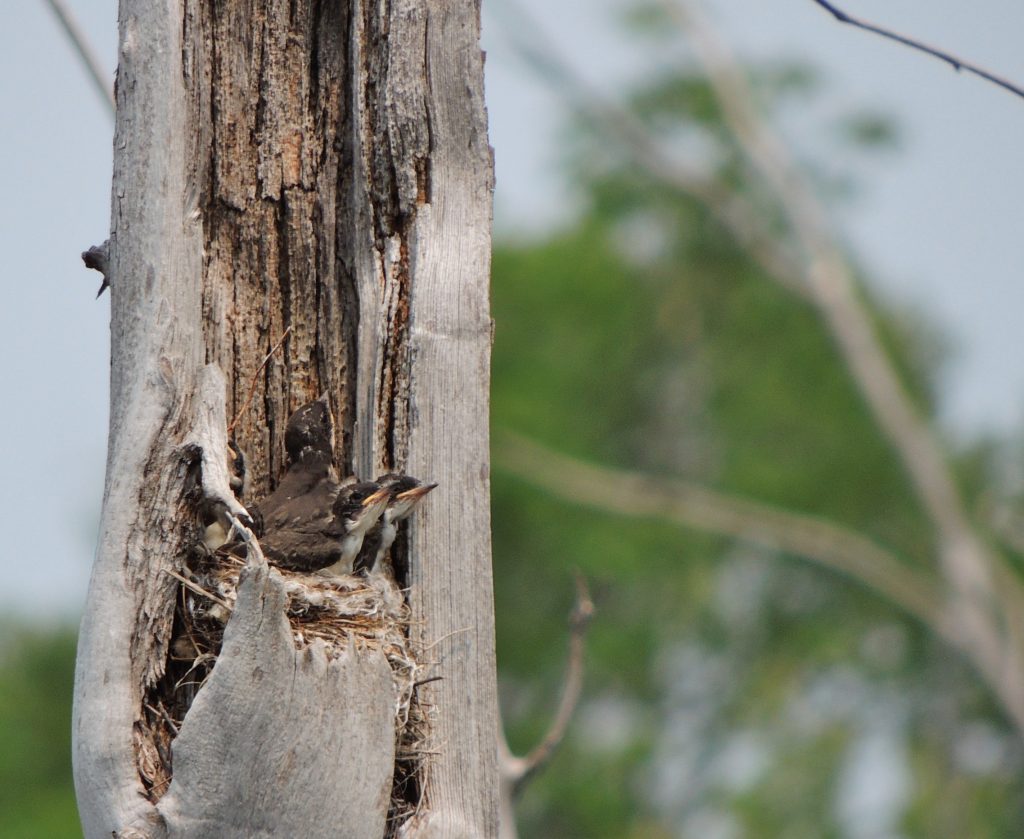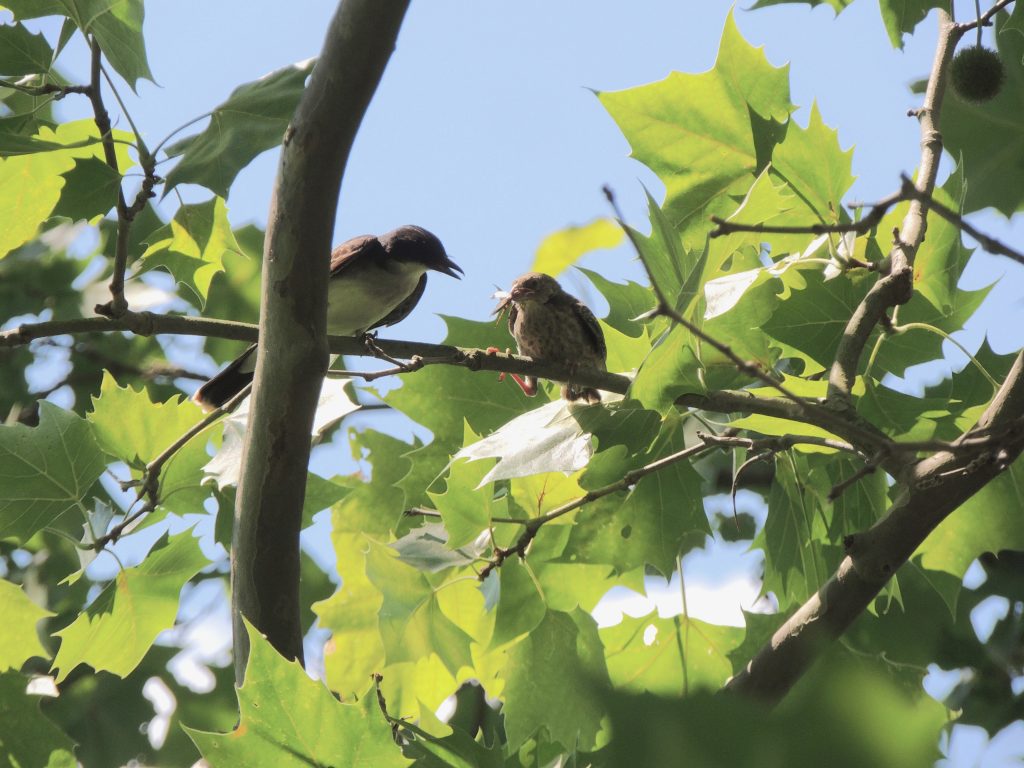
RBG. Hendrie Valley, Burlington ON. July 1 2021. If June is the most frantic of breeding-bird months, then July is the winding-down. Now, at the tipping point, the young of the year are pretty well all out of the nest. (Those that have survived predation by squirrels, jays, crows, rats and snakes; or starvation due to a late burst of cold weather). I’ve learned that an effective approach to gathering evidence for the Breeding Bird Atlas is to go often, go slowly, and listen, linger, and watch. I concentrate on a few very productive places, each different in habitat and bird species.
Today I walked (at a pace that could hardly be called exercise) along a streamside trail. At first it was busier with people than with birds, probably because today is Canada Day, a day when Canadians too often ask themselves whether they are worthy, unlike Americans who, I think, believe the whole world celebrates the 4th of July with them, or the English few of whom could tell you what, or when, is St. George’s Day. But never mind, it was a productive breeding-bird morning.
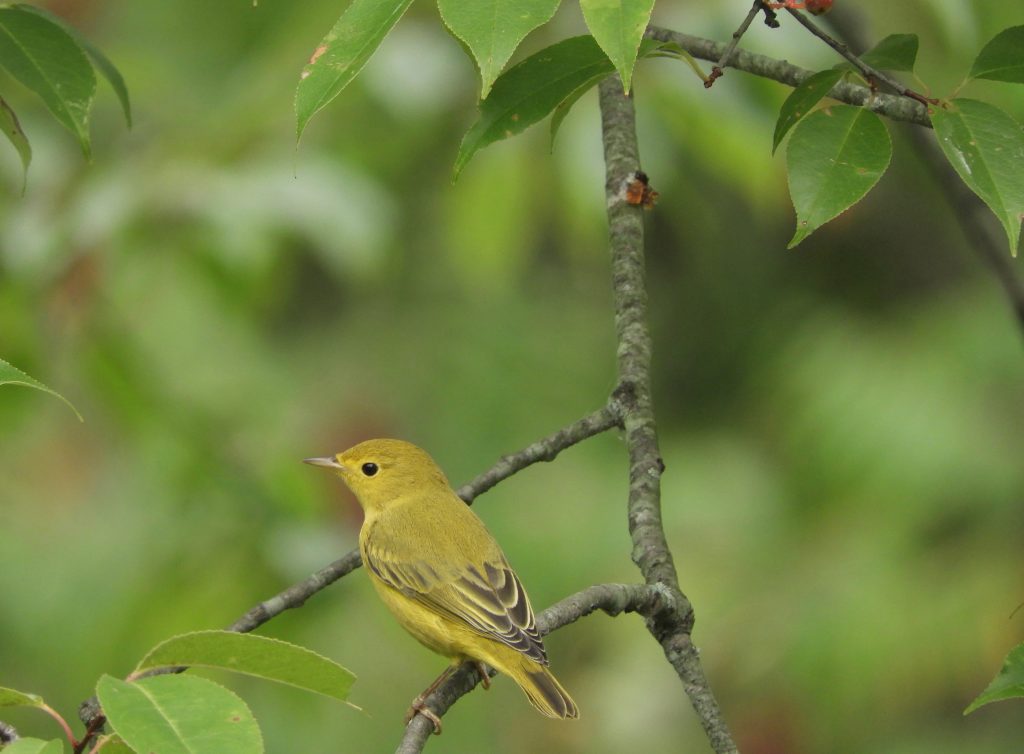
For some time, I was absorbed watching a pair of Yellow Warblers tending their hungry brood. Fledgling Yellow Warblers are pale below, washed out, versions of the female parent, their conspicuously beady eye makes them reminiscent of Nashville Warblers, to me anyway.
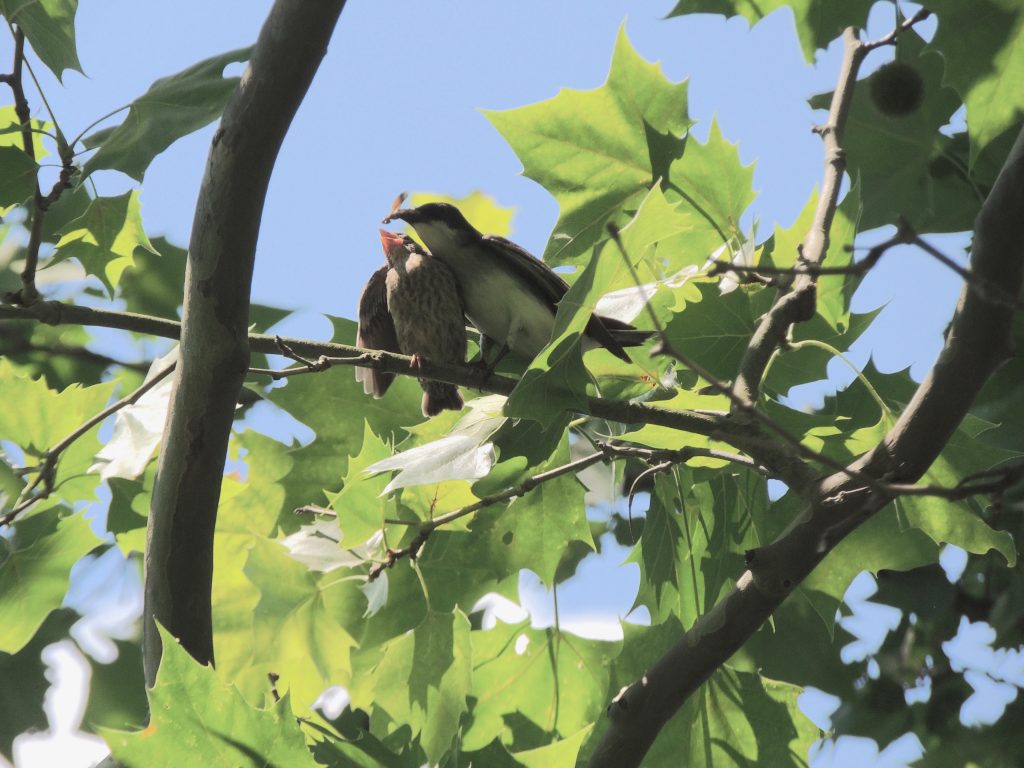
The Birds of the Day were a young Brown-headed Cowbird and a pair of attentive Eastern Kingbirds, they made for a very interesting hour. It started when I heard a thin, wheezy, call coming from the lower branches of an American Sycamore. It sounded like a Blue-gray Gnatcatcher but when I located the source it turned out to be a drab and stubby juvenile Brown-headed Cowbird. I wouldn’t say that I knew right away what it was but when, moments later, an Eastern Kingbird landed beside it and stuffed a beak-load of insects down its throat, I knew. North Americans are generally familiar with cowbirds as nest parasites, but cowbirds aren’t musical, nor are they wrapped in anything like the colourful folklore of Eurasia’s Common Cuckoo. But in both cases, the females lay their eggs opportunistically in the nests of other species. It then falls to the hapless host to raise the young cuckoo or cowbird.
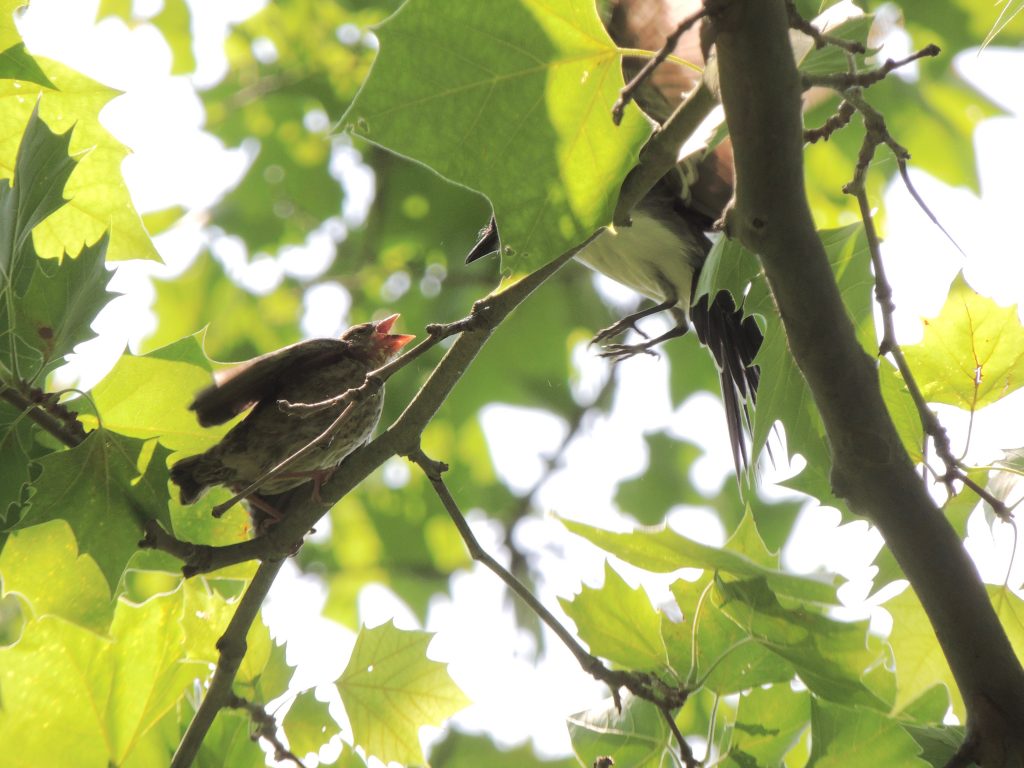
I spent the best part of an hour watching the comings and goings of the kingbirds. The cowbird kept up its ‘Feed-me Feed-me” pleading but as soon as one of the food-delivering hosts drew near it stopped, crouched a little and quivered in supplication.
This parasite & host drama is a successful breeding strategy for the Brown-headed Cowbird, their population seems to be growing. What I find especially interesting about this particular cowbird/kingbird match-up is that Eastern Kingbirds are very aggressive protectors of their nest and immediate surrounds. The name Kingbird is apt, as is their family name of Tyrant Flycatchers. Territorial males forcefully challenge and drive off intruding birds of all species whether they mean harm or not; How did one slip by, and worse, leave behind an egg?
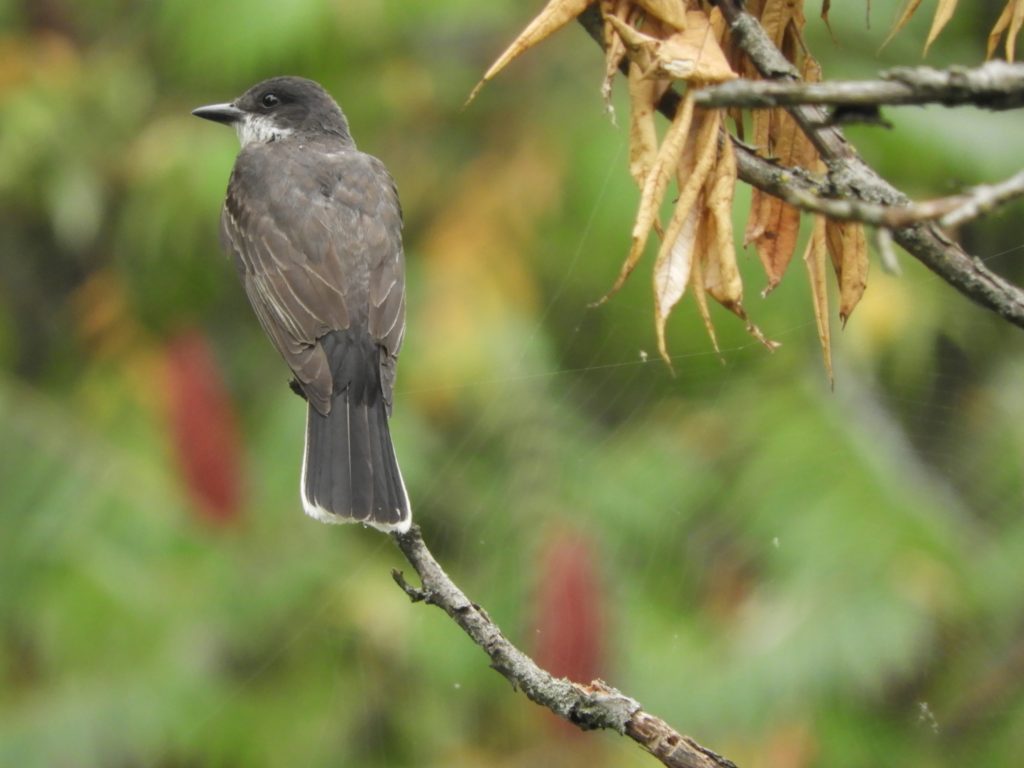
I took many photos in difficult conditions against the bright midday sky. I’m quite pleased with a few and you can almost sense some parental tenderness.
